X
wikiHow is a “wiki,” similar to Wikipedia, which means that many of our articles are co-written by multiple authors. To create this article, 14 people, some anonymous, worked to edit and improve it over time.
This article has been viewed 31,807 times.
Learn more...
If you or a loved one reacts unusually to sensory input in the environment, you may consider whether Sensory Processing Disorder (SPD) is the cause. Following these steps may help determine whether your child should be evaluated by a professional; if the evaluation reveals your child does have SPD, you can then take steps to help them address their SPD symptoms.
Steps
Method 1
Method 1 of 3:
Understanding Sensory Processing Disorder
-
1Recognize that a person with sensory processing disorder (SPD) will have a mix of traits.
- Some senses may be over-sensitive, and some may be under-sensitive.
- Not all traits will apply to a person. For example, someone who is over-sensitive to touch may only fit half the bullet points listed. This is normal, and it is still worth getting an evaluation.
-
2Be aware that SPD is not limited to childhood. People of any age may have SPD, and children do not necessarily "grow out of it" (although some do).Advertisement
-
3Recognize that SPD is not emotional, but physiological. People don't "do it on purpose," and trying to control their SPD would take tremendous amount of energy. It is best for people to be understanding and accommodating to a person with different sensory needs.
- Punishing a child with SPD will not magically make them sit still, eat chili without crying, stop finger flicking, et cetera—but it will cause a lot of stress and make them stop trusting you.
-
4Recognize conditions that may co-occur or be mistaken for SPD. Talk to a professional to consider and rule out anything that could be affecting the person.
- Most autistic people have SPD. Autistic people tend to experience passionate interests, confusion in social situations, repetitive movements, and disorganization.
- Sensory seeking could look similar to hyperactive type ADHD, and sensory sensitivity could look like inattentive type ADHD. (People with ADHD may also have SPD.)
- Visual under-sensitivity could be mistaken for dyslexia or other disabilities that impact reading and learning.
- Auditory under-sensitivity could be mistaken for being hard of hearing.
-
5Talk to an occupational therapist, or someone else who specializes in SPD. While SPD is not an official diagnosis under the DSM 5, it can be identified and treated by a specialist.
- Expect to fill out a questionnaire about sensory responses. If a child is being evaluated, a parent/guardian will be given a form to answer about the child, and the child will be given one to fill themselves if they are old enough.
-
6Recognize that SPD can be treated through a "sensory diet" and/or sensory integration therapy. A sensory diet means incorporating sensory activities into their lifestyle, to help reduce sensory issues. An occupational therapist can provide sensory integration therapy and can help come up with a sensory diet tailored to the person's need.
Advertisement
Method 2
Method 2 of 3:
Noticing Over-Sensitivity
-
1Notice sensitivity to light and vision. Someone with sensitive vision will notice details and may be distracted by them, and often has difficulty with bright light.
- Prefers dim lighting
- Sensitive to bright lights: squints, covers eyes, rubs eyes, gets a headache
- Can't handle bright screens in a dark room; may want to turn on a light or dim the screen
- Eyes get sore after reading or watching TV
- Avoids eye contact because it is distracting
-
2Recognize over-sensitivity to sound. A person who is sensitive to sound, unlike superheroes such as Superman, is often more harmed than helped by their hearing.
- Covers ears, cries, or runs away when confronted with loud noise
- Fearful of loud noises (vacuums, hairdryers, sports cars, motorcycles, hand dryers in public bathrooms, etc.)
- Distracted by background noise
- Asks people to be quiet often
- Hates/avoids loud events: movie theaters, concerts, school assemblies.
- Dislikes noisy people and areas (cafeterias, busy streets, etc.)
-
3Observe sensitivity to oral input. Someone who is sensitive in this way tends to be very picky about what goes inside their mouth.[1] They may find it difficult to find foods that they can eat comfortably, because eating lasagna might be about as appetizing as eating bugs.
- Very picky eater (often averse to strong textures, temperatures, or flavors)
- Prefers bland foods; dislikes foods that are too spicy, sour, sweet, and/or salty
- Hates licking envelopes, stamps, or stickers; will ask someone else to do it
- Only likes certain brands of toothpaste or mouthwash; may use flavors "for kids" into adulthood
- Afraid of the dentist
-
4Notice sensitivity to smell. Someone sensitive to smell will notice many odors, and cannot stand smells that other people barely notice.
- Reacts very strongly to odors like cigarette smoke, cut grass, and other things that people don't notice as much
- Comments on people's smells ("You smell like mouthwash/Were you eating salsa?")
- Bothered by perfumes or colognes
- Avoids certain buildings because they smell bad
- Bothered by cooking smells
-
5Look for sensitivity to touch. Someone who is sensitive to touch may avoid it and startle easily, especially if the touch is light or unexpected. People sensitive to touch are usually characterized by some or most of the following:
- Dislikes cuddling, hugging, or being held
- "Wipes off" wet kisses
- Sensitive to pain and injury
- Distressed by sock seams[2] , brushing hair (may be picky about brushes), dirt on the skin, raindrops, shower water, rough bed sheets, cutting hair/fingernails/toenails, or being barefoot
- Extremely ticklish
- Picky eater, hates when different foods touch each other, may avoid hot/cold food, anxious about trying new foods [3]
- Cuts tags off clothes, can't handle certain cloth textures
-
6Notice over-sensitivity to movement (vestibular input). Moving around can be overwhelming to a sensitive person, so they may move slowly and carefully, and be afraid of anything that involves fast or unpredictable movement.
- Dislikes theme park rides, sports, walking on uneven terrain, and other activities involving lots of movement
- Afraid of elevators, escalators, and heights
- As a child, physically clings to a trusted person
- Hates getting tipped backwards or upside down
- Startles if someone else moves them (such as pushing in their chair)
- Clumsy, poor balance
Advertisement
Method 3
Method 3 of 3:
Noticing Under-Sensitivity
-
1Notice under-sensitivity to visual input. This is often noticed early on, because the person will struggle with reading and writing in school.
- Stares at lights, or even the sun
- May be misdiagnosed with dyslexia: has a hard time telling similar-looking letters and images apart, reverses words when copying (such as copying "no" as "on")
- Writes at a slant, and has a hard time with size and spacing
- Loses place while reading or writing
- Struggles with puzzles and understanding spatial relationships
- Clumsy due to difficulty understanding exactly where things are
-
2Recognize under-responsiveness to sound. Someone who isn't sensitive to sound may not notice various sounds, and seem hard of hearing. They may find verbal communication difficult, because they struggle to understand spoken words.
- Doesn't seem to hear when someone starts talking to them
- Loves loud noise (music, TV)
- Noisy, and enjoys the sound
- Oblivious to some sounds, doesn't know where some sounds are coming from
- Asks people to repeat what they said
- Did not babble much as a baby
-
3Observe under-sensitivity to oral input. An under-sensitive person seeks out flavor and taste, and may even put non-edible objects in their mouths.
- Chews on pencils, fingernails, hair, or other objects (may have learned to substitute this with chewing gum)
- Loves strong flavor; piles on spices and condiments
- Likes vibrating toothbrushes, and may even enjoy visiting the dentist
-
4Notice low sensitivity to smell. Someone who is under sensitive to smell may not notice when something smells bad, and enjoys strong odors.
- Doesn't notice bad smells, such as garbage, gasoline, or a gas leak
- Eats or drinks expired/poisonous things, because they never noticed the bad odor
- Enjoys strong smells
-
5Look for under-sensitivity to touch. Someone who is under-sensitive may not notice touch, and tends to seek it out in its more extreme forms.
- Does not notice when gently touched
- Enjoys "getting their hands dirty" and messy play
- Hurts themselves (hitting, biting, pinching)
- As a child, does not realize that hitting/violence hurts other people
- May not notice dirty hands, runny nose, an insect on their skin, etc.
- Not bothered by injuries or getting shots
-
6Notice under-sensitivity to movement (vestibular input). An under-sensitive person may be in constant motion, enjoying the feeling of moving around.
- Thrill seeker: loves theme park rides, doing stunts, and other activities involving fast or sudden movement
- Runs, skips, jumps instead of walking
- Likes to spin, jump, climb, go upside down
- Shakes leg, rocks back and forth, doesn't sit still
Advertisement
References
About This Article
Advertisement
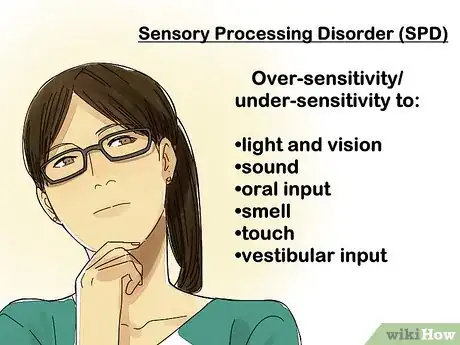


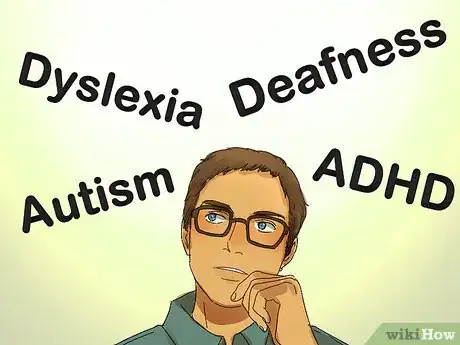

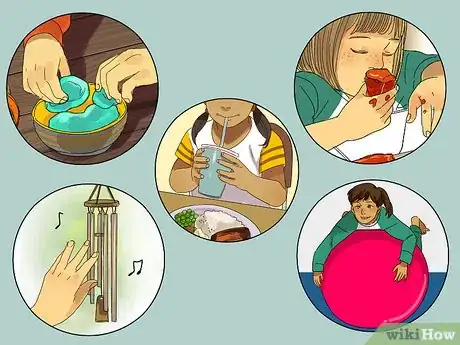

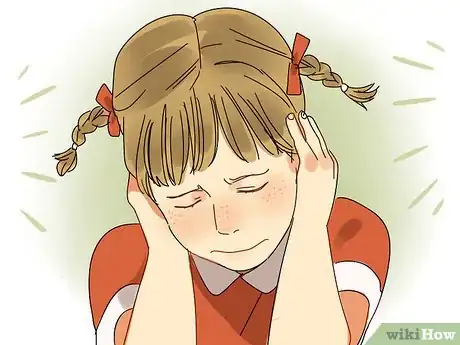

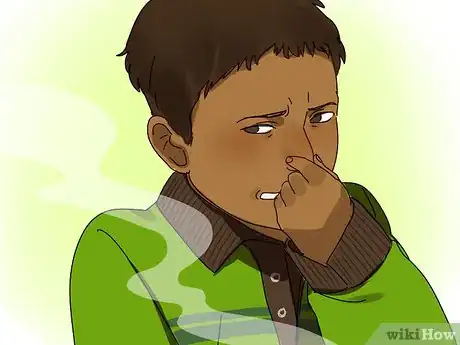
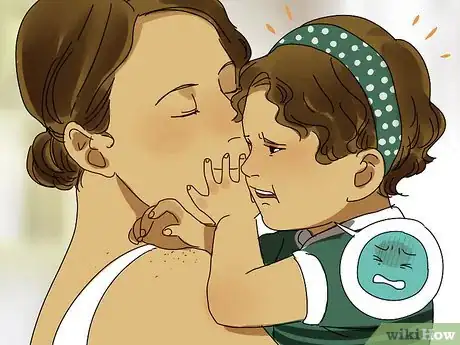


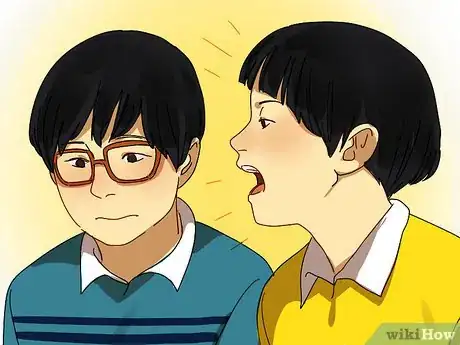


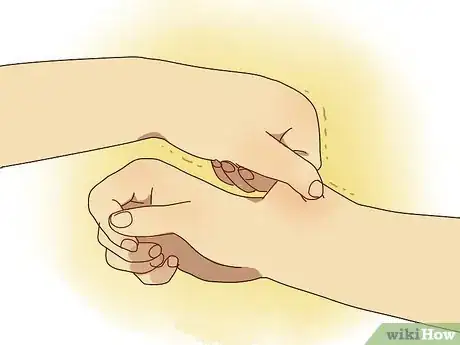
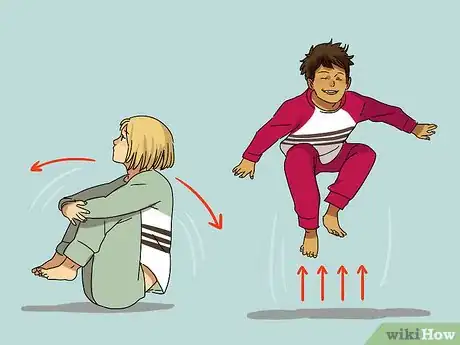





















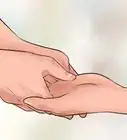






































Medical Disclaimer
The content of this article is not intended to be a substitute for professional medical advice, examination, diagnosis, or treatment. You should always contact your doctor or other qualified healthcare professional before starting, changing, or stopping any kind of health treatment.
Read More...